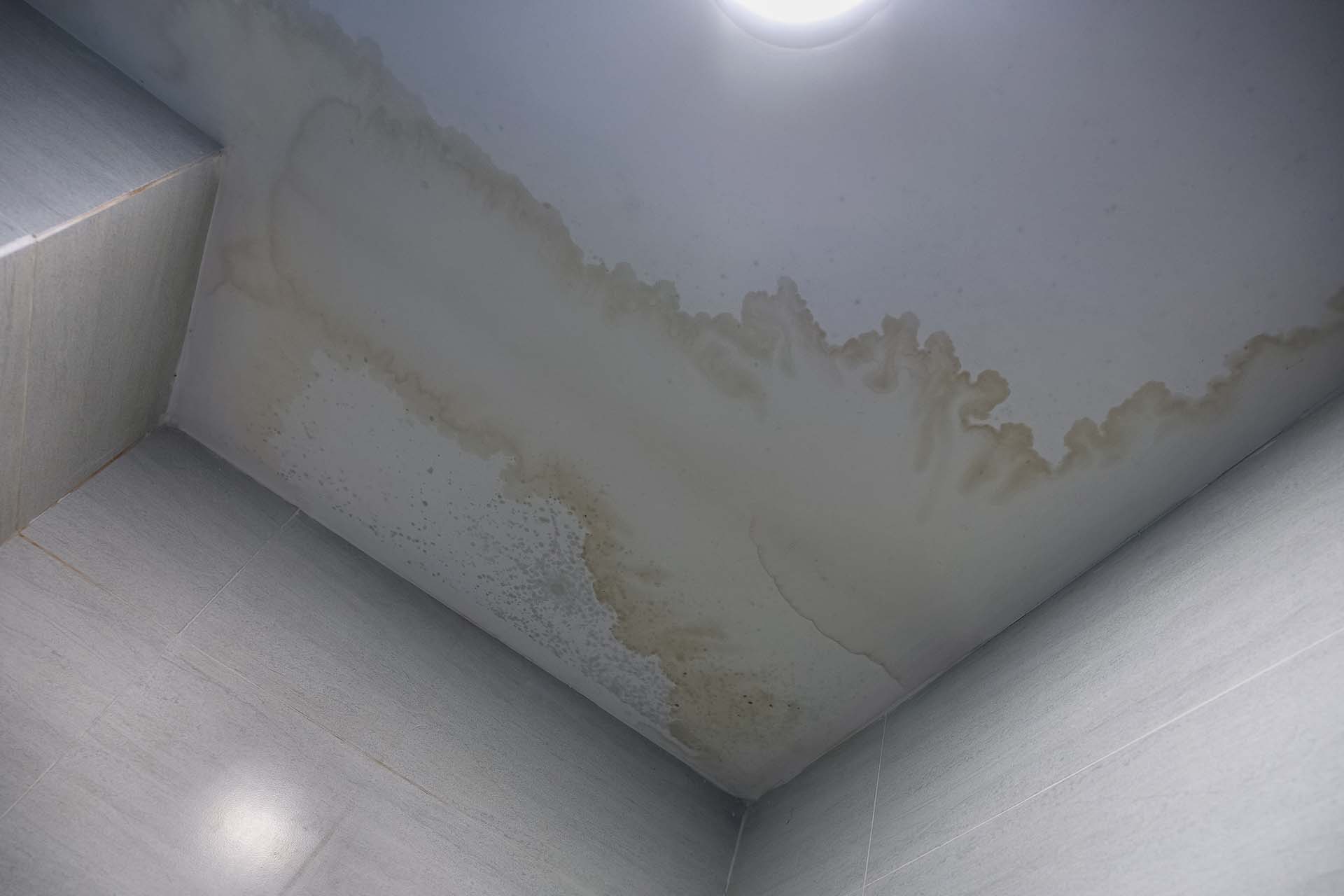
- Discover causes like water damage or mold growth for yellow ceiling stains.
- Learn how ceiling damage after roof replacement can lead to staining.
- Explore interior roof repair solutions to restore your ceiling’s look.
Yellow stains on your ceiling are unsightly and often signal underlying issues that require immediate attention. These stains, while initially cosmetic, can be an indicator of significant problems like moisture buildup, mold, or even structural concerns. Understanding the causes behind these stains is crucial to addressing and preventing further ceiling damage after roof replacement or other home repairs.
Common Causes of Yellow Ceiling Stains
Water Damage
One of the most common culprits of yellow stains is water damage. Leaks from damaged roofing or plumbing issues allow moisture to accumulate, causing discoloration that appears as yellow or brownish patches on your ceiling. This can occur gradually if water seeps through the layers of insulation or drywall. For example:
- A poorly sealed roof can lead to drips during storms, which might not show immediate signs until yellow stains emerge.
- Clogged gutters or downspouts that redirect water improperly can also lead to slow leaks.
In some cases, roof decking might warp or deteriorate, further exacerbating the problem. Properly addressing the roof decking and eliminating water infiltration is critical to stopping the damage.
Mold and Mildew Growth
Another frequent cause of yellow stains is mold or mildew, which thrive in damp, humid conditions. Persistent moisture, often from roof or plumbing leaks, creates the perfect environment for these fungi to grow. Over time, this can result in yellow or brown stains accompanied by a musty odor.
Failing to address mold growth promptly not only damages the ceiling but also poses health risks to your household. Using a mold-resistant primer and addressing moisture sources can help mitigate this issue.
Ceiling Damage After Roof Replacement
Yellow stains can sometimes develop as a result of ceiling damage after roof replacement. If the replacement process disrupts the layers beneath the roof, such as insulation or support beams, it could lead to leaks or imperfections. Additionally:
- Gaps in flashing or underlayment could allow moisture to infiltrate even after the roof replacement.
- Debris from the replacement process left inside the attic may inadvertently trap moisture, creating conditions for stains to develop.
When replacing your roof, ensuring proper sealing and cleanup can prevent issues from affecting the interior.
Nicotine and Smoke Residue
Homes with indoor smokers or frequent use of fireplaces can accumulate nicotine and soot residues on ceilings. These substances adhere to surfaces over time, leaving a yellowish film that is especially noticeable on white or light-colored ceilings. Additionally, fireplaces that aren’t properly vented can distribute smoke particles across ceilings, creating unsightly stains.
Cooking Oils and Grease
In kitchens, particularly those without proper ventilation, airborne grease and oil particles can accumulate on ceilings. This is especially common in homes with open-concept designs where cooking areas are not well isolated. Over time, these particles form a sticky layer that can yellow the ceiling.
Aging Paint and Materials
Sometimes, yellow stains aren’t a sign of external problems but rather the natural aging of the paint or materials used in your ceiling. Over time, paint reacts to environmental factors such as humidity, heat, and light, leading to discoloration.
How to Address Yellow Stains on Ceilings
Once the cause is identified, follow these steps to fix and prevent future staining:
-
-
Identify and Fix the Root Cause
-
Before attempting cosmetic fixes, resolve the underlying problem:
-
-
- If water damage is the issue, inspect for roof leaks, faulty plumbing, or blocked gutters.
- Address moisture sources by ensuring your attic and home are well ventilated.
- For damage caused by a recent roof replacement, consult your roofing contractor to address any residual issues with the roof decking.
-
Clean the Stained Area
-
Cleaning methods depend on the type of stain:
-
-
- Mold and Mildew: Apply a bleach solution to eliminate mold spores and prevent regrowth.
- Nicotine or Smoke: A mixture of warm water, detergent, and vinegar can effectively remove residue.
- Grease or Oil: Use a degreasing cleaner for kitchen stains.
-
Repaint the Ceiling
-
After thoroughly cleaning and drying the ceiling, repaint to restore its appearance:
-
- Use a stain-blocking primer before applying the topcoat.
- Opt for high-quality paint that resists discoloration.
Preventing Future Ceiling Stains
To maintain a pristine ceiling, take proactive steps:
- Ensure proper ventilation in high-moisture areas like kitchens and bathrooms.
- Regularly clean your ceiling to remove grease, smoke residue, and dust.
- Address leaks promptly to prevent damage to roof decking or interior structures.
- When performing interior roof repair, work with trusted professionals who can ensure no residual moisture remains in your home.
Yellow stains on ceilings may seem minor, but they often point to deeper issues such as water damage, mold, or structural concerns. Understanding their causes—be it ceiling damage after roof replacement or long-term exposure to smoke—helps you determine the best course of action. With proper care and timely interior roof repair, you can restore your ceiling’s appearance and protect your home from further damage.
If you’re ready to address yellow stains and other roofing concerns, contact Jack C. Wilson Roofing Co. today for expert assistance.

